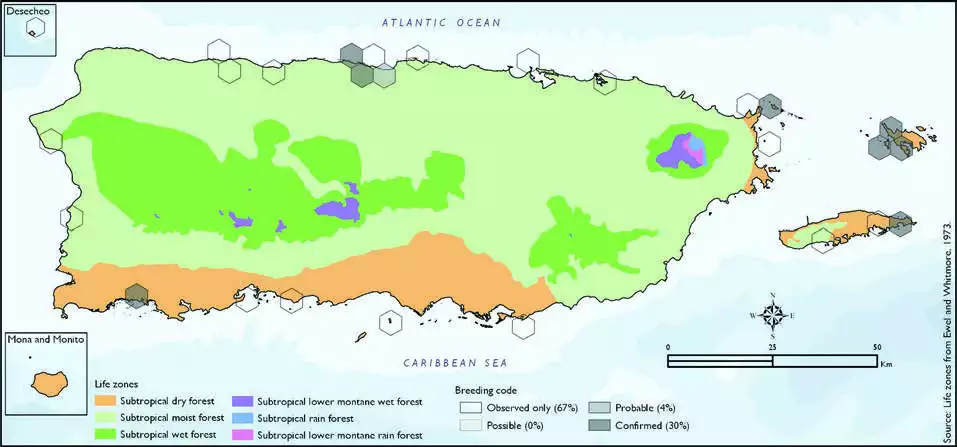Roseate Tern
Description
The roseate tern (Sterna dougallii) is a tern in the family Laridae. The genus name Sterna is derived from Old English "stearn", "tern", and the specific dougallii refers to Scottish physician and collector Dr Peter McDougall (1777–1814). "Roseate" refers to the bird's pink breast in breeding plumage.
This is a small-medium tern, 33–36 cm (13–14 in) long with a 67–76 cm (26–30 in) wingspan, which can be confused with the common tern, Arctic tern, and the larger, but similarly plumaged, Sandwich tern. The roseate tern's thin sharp bill is black, with a red base which develops through the breeding season, and is more extensive in the tropical and southern hemisphere races. It is shorter-winged and has faster wing beats than common or Arctic tern. The upper wings are pale grey and its under parts white, and this tern looks very pale in flight, like a small Sandwich tern, although the outermost primary flight feathers darken during the summer. The adults have very long, flexible tail streamers and orange-red legs. In summer, the underparts of adults take on the pinkish tinge which gives this bird its name.
Distribution & Habitat
The Roseate Tern occurs throughout the worlds tropical
and subtropical oceans, and it
is generally uncommon to rare
in the West Indies (Raffaele and
others 1998). Small breeding
colonies can be found from The
Bahamas through the Greater
Antilles, especially in the Virgin
Islands and cays off southwestern
Puerto Rico (Oberle 2018), which
support the largest population
of Roseate Terns in the tropical
Atlantic Ocean (Raffaele and
others 1998). It is described
as fairly abundant during the
summer in coastal areas of
Puerto Rico (Biaggi 1997) and
is a regular breeder off Culebra
and cays south of La Parguera
in the municipality of Lajas (Oberle 2018), as well as other
cays near Puerto Rico (Biaggi
1997). On Vieques, it is a fairly
common breeding visitor in
summer (Gemmill 2015, Johnson
1988), extremely rare in fall, and
rare in spring (Gemmill 2015).
It usually inhabits coastal areas,
harbors, and lagoons (Raffaele
and others 1998). The atlas
fieldwork yielded a total of 42
records within 27 hexagons or 6
percent of the 479 total hexagons
(see map). Of the 27 hexagons
where this tern was found,
breeding met the atlas definition
of confirmed in 30 percent (8)
of the hexagons and probable in
4 percent (1), while the species
was observed in 67 percent (18)
of the hexagons but without
evidence of breeding (see map). Roseate Tern distribution. The map shows the highest breeding code by hexagon and overlaying the ecological life zones in
Puerto Rico. Note: percentages may not total 100 due to rounding. 123Roseate Tern/Palometa

Breeding Habits
Previously published reports indicate that the Roseate Tern
breeds from May to July (Raffaele
and others 1998). Nesting is
usually colonial on offshore cays,
and the nest consists of a scrape
in the sand or a rocky depression
(Raffaele and others 1998). On
Culebra, the terns nest on cliffs
between boulders (Oberle 2018).
Breeding colonies are very local,
but birds are regularly observed
along coastal waters during the
breeding season (see map). Atlas
results show that this species
breeds from May to July (see chart). Overall, the breeding
activity peaks in June, and it
mostly takes place within the
subtropical dry forest life zone
(see chart). Results show that this
species breeds mostly in coastal
areas within the subtropical dry
forest life zone (67 percent of the
hexagons) and the subtropical
moist forest life zone (33 percent
of the hexagons) (see table
and map).
Conservation
The current overall population trend of the Roseate Tern is
described as uncertain or unknown as some populations
are decreasing, while others are
stable or increasing (Wetlands
International 2012). This species
is currently listed as a species
of least concern by the IUCN
(BirdLife International 2018).
However, it is locally listed as a
threatened species by Federal
laws (Oberle 2018, USFWS 1973).
In Puerto Rico, the Roseate Tern
has a protected habitat in land of
16 percent or 35 km2 of the total area covered by the hexagons
where evidence of breeding was
found for this species (214 km2).
Related Species
Family:
gull